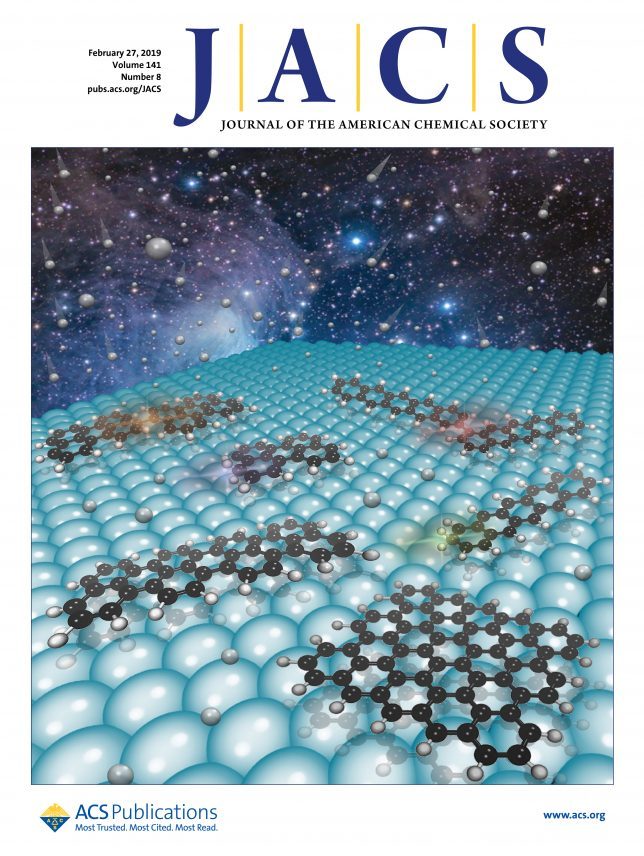The ESISNA group, in collaboration with the Nanotech@surfaces group from Empa (Switzerland), has demonstrated the catalytic role that atomic hydrogen can play in the formation of new intermolecular C-C covalent bonds on relatively inert surfaces. For this purpose, we have annealed a Au(111) surface, previously covered with different PAHs, in the presence of an atomic hydrogen flux. As a consequence, PAHs interact among them forming dendritic structures on the surface, otherwise unachievable by direct thermal annealing. The critical point in this novel methodology resides in the formation of intermediate radicalary species induced by molecular super-hydrogenation upon hydrogen adsorption on the molecule. The whole reaction process has been characterized by means of high-resolution STM and rationalized by extensive DFT calculations. This work opens a door toward the catalysis of covalent intermolecular bonds on inert surfaces.

This work has been published in the Journal of the American Chemical Society, “On-surface Hydrogen-induced Covalent Coupling of Polycyclic Aromatic Hydrocarbons via a Super-hydrogenated Intermediate” by C. Sánchez-Sánchez, J. I. Martínez, N. Ruiz del Arbol, P. Ruffieux, R. Fasel, M. F. López, P. L. de Andrés, J. A. Martín-Gago

